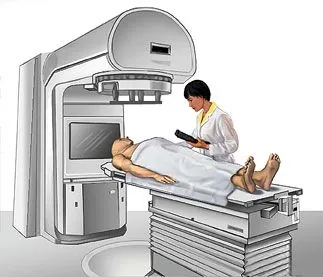
Revolutionary Classification System Could Transform Palliative Radiotherapy Outcomes!
2025-04-18
Author: Siti
Unlocking the Benefits of Palliative Radiotherapy
A groundbreaking patient classification system may hold the key to significantly enhancing patients' quality of life (QOL) during palliative radiation therapy. This innovative approach, stemming from recent findings in a retrospective study, indicates that patient stratification based on pain response and progression time could lead to better treatment outcomes.
Study Breakdown: What the Research Revealed
Conducted on 273 patients with assessable lesions, the trial discovered a striking compliance rate of 67%. Notably, the results showed a stark contrast in compliance levels: responders to palliative radiotherapy adhered at a rate of 72%, whereas those who did not respond lagged behind at 57% (P = .004). Patients were categorized further, with class 1—those not treated with opioids or undergoing reirradiation—showing a compliance rate of 70%. In contrast, class 3, involving patients treated with both opioids and reirradiation, reported only 39% compliance.
Quality of Life Scores: Classes in Comparison
The study's findings extend to quality of life evaluation, utilizing the highly regarded European Organisation for Research and Treatment of Cancer (EORTC) scores. Interestingly, results showcased that class 1 outperformed classes 2 and 3 in global health status assessments, indicating that treatment response significantly correlates with enhanced QOL. Emotional well-being surged across all classes, signaling a positive trend despite varied results in physical functioning—where class 3 experienced a decline.
Pain Relief Across Patient Classes
Pain scores saw a reduction across the board, with class 1 boasting the most substantial decreases. While class 2 showed a slight decrease in insomnia, fatigue and dyspnea scores rose, indicating complex symptom interactions in patients receiving palliative care.
Expert Insight: The Potential of Classification Systems
Lead investigator Dr. Yutaro Koide from Aichi Cancer Center emphasized the significance of this classification system: "We identified clear distinctions in quality of life changes linked to pain responses. This system could identify patient populations that are more or less likely to see improvements in their QOL, providing a more tailored approach to palliative care."
A Bright Future for Palliative Care
The study highlights the urgent need for personalized treatment plans in palliative care, suggesting that with the right classification system, healthcare providers can better determine which patients will benefit most from radiation therapy. This research presents hope for enhanced patient experiences, underscoring the importance of both effective pain management and improved quality of life for those facing serious health challenges.






 Brasil (PT)
Brasil (PT)
 Canada (EN)
Canada (EN)
 Chile (ES)
Chile (ES)
 Česko (CS)
Česko (CS)
 대한민국 (KO)
대한민국 (KO)
 España (ES)
España (ES)
 France (FR)
France (FR)
 Hong Kong (EN)
Hong Kong (EN)
 Italia (IT)
Italia (IT)
 日本 (JA)
日本 (JA)
 Magyarország (HU)
Magyarország (HU)
 Norge (NO)
Norge (NO)
 Polska (PL)
Polska (PL)
 Schweiz (DE)
Schweiz (DE)
 Singapore (EN)
Singapore (EN)
 Sverige (SV)
Sverige (SV)
 Suomi (FI)
Suomi (FI)
 Türkiye (TR)
Türkiye (TR)
 الإمارات العربية المتحدة (AR)
الإمارات العربية المتحدة (AR)